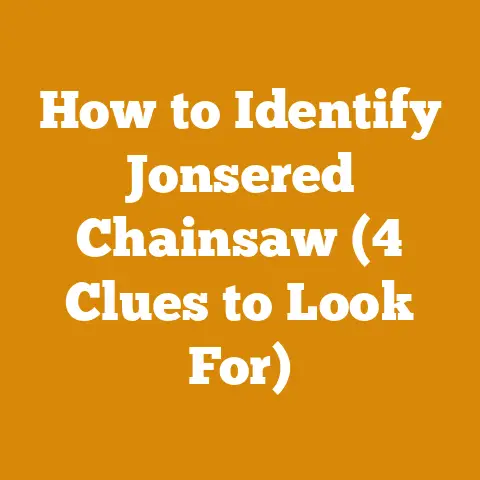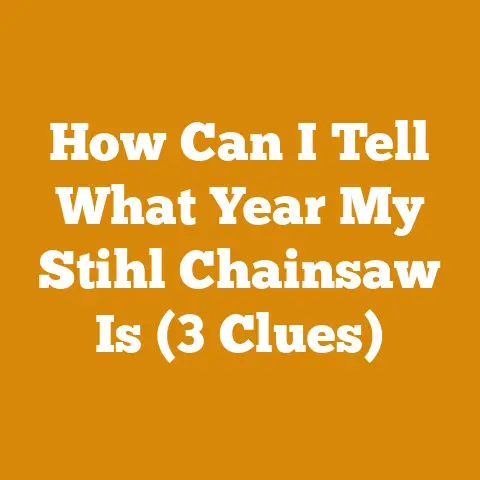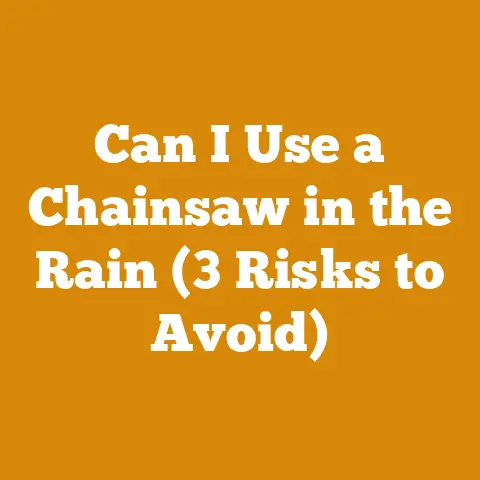Tree Removal Quote (3 Factors That Affect Cost)
Tree Removal Quote: 3 Factors That Affect Cost
If you’ve ever looked at a tree in your backyard and thought about getting it removed, you might have been baffled by the quotes you received. It’s not just about cutting down a tree; there are so many nuances involved that can affect the cost. Let’s explore these together in detail.
1. Tree Size
Height and Diameter Matter
The sheer size of a tree is perhaps the most significant factor in determining the cost of removal. The larger the tree, the more work and resources are required. Here’s why:
- Tall Trees: Taller trees mean more climbing and potentially more equipment like cranes or bucket trucks. They also generally have more branches and foliage to deal with.
- Wide Trees: A wider tree has a larger trunk diameter, which means more wood to cut through and remove.
Personal Experience: I remember a project where we had to remove an enormous sycamore tree. It was about 120 feet tall with a trunk diameter of almost 6 feet. It took two full days with a team of five people, and we needed both a crane and a bucket truck. The quote for this job was significantly higher than usual due to its size.
How to Measure
Accurate measurement is crucial for quoting and planning. Here’s how you can do it:
- Height Measurement: Use a clinometer, which can measure angles from a distance. By standing a known distance away from the tree, you can calculate its height using basic trigonometry.
- Diameter Measurement: Measure approximately 4.5 feet above the ground—this is known as Diameter at Breast Height (DBH). Wrap a measuring tape around the trunk to get the circumference, then divide by π (approximately 3.1416) to get the diameter.
Impact on Cost
Larger trees require more labor and machinery, meaning more costs. Plus, there’s often more debris to clean up afterward.
Tip: If you’re comfortable with measuring, provide this information when requesting quotes to get more accurate estimates.
2. Location and Accessibility
Proximity to Structures
When a tree is close to houses, power lines, or other structures, things get complicated. Such locations require precision to avoid damage:
- Risk Factor: The risk of damaging property increases the complexity and therefore the cost. To mitigate these risks, professionals use advanced techniques like rigging branches down rather than simply letting them fall.
Example from the Field: I once worked on a project where a large oak tree was nestled between a home and a garage. We had to use ropes to guide each branch down safely. This added several hours to the job but ensured there was no damage.
Access Challenges
Sometimes, simply getting to the tree can be an issue:
- Narrow Passages: If equipment can’t reach the location easily due to fences, narrow gates, or landscaping features, it may require additional manual labor.
- Terrain Difficulties: Slopes or uneven ground can complicate equipment use and worker safety.
Efficiency Tip: Clearing any obstacles you can manage beforehand might reduce labor costs.
Urban vs. Rural Locations
Urban areas often have more access issues compared to rural locations where space is more abundant. However, urban trees might be easier in terms of disposal due to closer facilities.
3. Condition of the Tree
Health and Stability
The tree’s health significantly affects how straightforward or challenging removal will be:
- Healthy Trees: Generally predictable, as they are structurally sound.
- Dead or Dying Trees: These can be hazardous as they may fall apart unexpectedly during removal.
A Memorable Job: I recall removing an old elm that had been dead for years. The trunk was hollowing out, which made it extremely dangerous. We had to use special techniques to ensure it didn’t collapse unexpectedly.
Diseases or Infestations
Diseased or pest-infested trees often require careful handling:
- Transport Regulations: Diseased wood may need specific disposal methods to prevent spreading pathogens or pests.
Local Regulations Example: In areas affected by emerald ash borer infestations, there are strict guidelines on how ash wood must be handled to prevent spreading the beetle.
Critical Safety Precautions
Safety always comes first in tree removal. Here are some key precautions:
- Protective Gear: Helmets, eye protection, gloves, and steel-toed boots are non-negotiable.
- Equipment Checks: Regular maintenance of chainsaws, ropes, and other gear ensures safety during operation.
- Team Communication: Clear communication among team members prevents accidents.
Safety Story: During one removal job, a branch swung unexpectedly due to wind. Because we had established clear signals and communication protocols, everyone was able to react quickly and avoid injury.
Prerequisite Knowledge and Equipment
Before diving into tree removal, ensure you have or understand:
- Knowledge of Species: Different trees require different techniques based on their structure and wood type.
- Basic Tree Biology: Understanding how trees grow helps in planning safe removal.
- Equipment Needs:
- Chainsaw (appropriate size for the job)
- Rigging ropes
- Harnesses
- Ladders or lifts
- Chipper for debris
Tips and Warnings Boxes
Tip: Always hire certified arborists for complex jobs. Their expertise can prevent accidents and ensure your property remains undamaged.
Warning: Never attempt to remove large trees near power lines yourself. The risk of electrocution is significant.
Addressing Common Questions and Concerns
Let’s tackle some questions that often come up when discussing tree removal:
- “What if my tree is on a steep hill?”
- Removal costs might increase due to equipment challenges and safety concerns.
- “Is it cheaper to remove multiple trees at once?”
- Often yes! You may get a discount for multiple removals as it’s more efficient for crews to handle them together.
- “Can I keep the wood chips?”
- Absolutely! Many clients choose to keep the chips for landscaping use.
Troubleshooting Tips
If you’re navigating quotes or issues during removal:
- If a quote seems unusually low, ask detailed questions about what’s included.
- If unsure about access issues, an onsite assessment before quoting can prevent unexpected costs later.
Best Practices for Smooth Tree Removal
Here’s how you can ensure everything goes smoothly:
- Written Contracts: Always get a detailed contract outlining all aspects of the job.
- Verify Credentials: Check insurance and licensing of the company you’re hiring.
- Discuss Cleanup Beforehand: Clarify whether debris removal is included in your quote.
Conclusion and Next Steps
When considering tree removal, keep these factors in mind: size, location, and condition. Each affects costs differently, so understanding them helps you make informed decisions. Need further advice? Reach out to local professionals—they’re equipped with knowledge specific to your area’s flora and regulations.
FAQ Section
Q: How does weather affect tree removal? A: Adverse weather conditions like wind or rain can delay removal for safety reasons. Wet conditions also make cleanup more challenging.
Q: Is stump removal included in quotes? A: Not always. Stump grinding is often an additional service, so clarify this when getting quotes.
Q: Can I keep the wood after removal? A: Usually, yes! Just let your arborist know if you want to keep it for firewood or other uses.
Q: What happens if my tree is protected? A: Some trees are protected by local laws due to their species or historical significance. You’ll need permits for removal in such cases.
Exploring these intricacies with you has been great! If any questions pop up or if you need personalized advice, feel free to reach out anytime.






